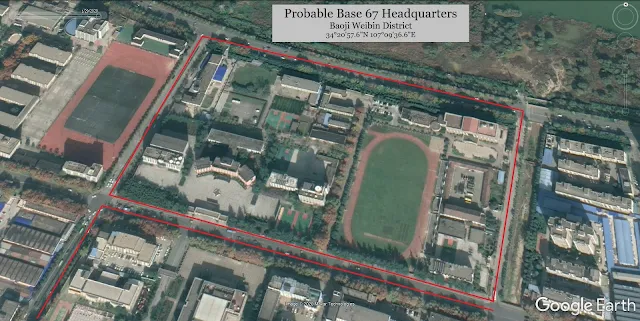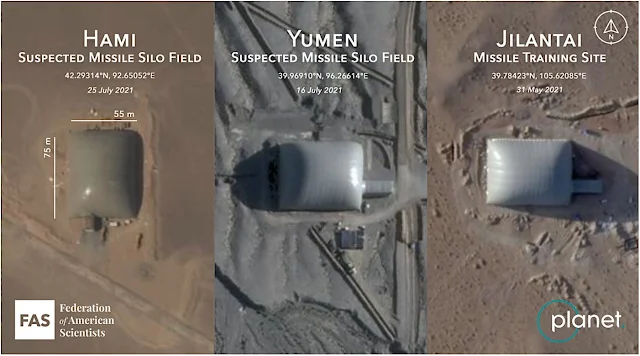China's Rocket Force: A Growing Military Challenge in the Asia-Pacific Region

China claims to have developed the DF-17 Hypersonic Glide Vehicle
In the span of less than a decade, China has significantly expanded the range of its land-based conventional strike missiles, emerging as a formidable player in the global missile forces arena. A recent report by The Wall Street Journal sheds light on a secretive Chinese military unit — People's Liberation Army Rocket Force (PLARF, 中国人民解放军火箭军), formerly known as the Second Artillery Corps — responsible for this expansion, unveiling one of the world's largest and most diverse land-based missile forces. As Western intelligence agencies and researchers bring forth evidence of its remarkable rise, questions about the force's objectives and capabilities take centre stage as per an analysis by IndraStra.
In a surprising move in August 2023, Chinese leader Xi Jinping replaced the head of the mysterious military unit known as the Rocket Force. Tasked with a crucial military objective, this force is now at the forefront of preparations for a potential invasion of Taiwan and serves as a deterrent against U.S. intervention. The force has not only rapidly increased its missile arsenal but has also conducted test launches at a rate surpassing the rest of the world combined, underscoring its strategic importance. Spread across China in six main bases, numbered 61 to 66, the rocket force has distinct geographical theatre commands, while the three following bases, numbered 67 to 69, conduct support missions. Bases in the south are geared towards a potential conflict with Taiwan, while those in the northeast are responsible for the Korean Peninsula and targeting Japan. The most secretive among these bases, the 7th base, Base 67 (67 基地, previously known as Base 22, it took on its current name in 2017) in Baoji City, is the guardian of China's strategic nuclear deterrent, housing the majority of the country's nuclear warhead stockpile.



Map Analysis Attribute: Base 67 GEOINT interpretations by Mark Stokes (Published at X, formerly Twitter, in May 2020)
Stokes is a former Executive Director at Project 2049, US Air Force (USAF) veteran, and a former Office of the Secretary of Defence (OSD) Senior Country Director for China, Taiwan, and Mongolia / Source: Google EarthFrom Base 67, nuclear warheads are distributed by rail across China, strategically positioning them in the northwest, northeast, and southern regions. Meanwhile, in China's north, bases are dedicated to maintaining nuclear-capable intercontinental ballistic missiles aimed at U.S. targets. Recent satellite imagery indicates the development of three new missile silo fields, a significant build-up since the Cold War, with locations in Hami, Yumen City, and Ordos City. These silo fields, if armed with nuclear warheads, could mark a profound shift in strategic dynamics. The concept of a "shell game," where only a fraction of silos may be armed, adds an element of unpredictability and complicates counterstrike calculations. The potential for launching missiles over the North Pole toward the continental United States raises the stakes for U.S. military planners.
 Image Attribute: Suspected missile silos near Ordos at different stages of construction. / Source: 2021 Planet Labs/Federation of American Scientists
Image Attribute: Suspected missile silos near Ordos at different stages of construction. / Source: 2021 Planet Labs/Federation of American Scientists
Image Attribute: Similar shelter domes are seen at Hami, Yumen, and Jilantai. / Source: 2021 Planet Labs/Federation of American Scientists
The rocket force's recent demonstration of its capability to strike Taiwan during military exercises underscores its role in the ongoing geopolitical tensions. Brigades subordinate to Base 61 have been actively involved in targeting Taiwan during missile tests, showcasing the force's ability to exert control over shipping lanes and effectively stranglehold the island during sensitive political times. China's view of Taiwan's autonomy and its connections with the U.S. is seen as a geostrategic vulnerability. The rocket force, positioned strategically along the first and second island chains, plays a pivotal role in preventing U.S. intervention in the event of a conflict over Taiwan.
The force has developed missiles capable of targeting U.S. forces within these island chains, including the Don Fang 26, famously known as the "carrier killer," posing a significant challenge to U.S. counter-intervention efforts. Recently, the Biden administration has made it clear that the United States will support Taiwan in case of a Chinese invasion. However, China's rocket force has expanded its capabilities, which now poses a serious threat to the US's ability to fulfil this commitment. This has dramatically raised the stakes in any potential conflict over the island. Despite these developments, China's Ministry of Defence has not responded to requests for comments and has remained tight-lipped. The increasing power of China's rocket force represents a significant change in the military landscape of the Asia-Pacific region. As tensions between nations continue to simmer, the force's growing capabilities and strategic positioning present new challenges and considerations for global powers. Careful navigation is required to ensure regional stability and security in the face of these developments.



No comments:
Post a Comment